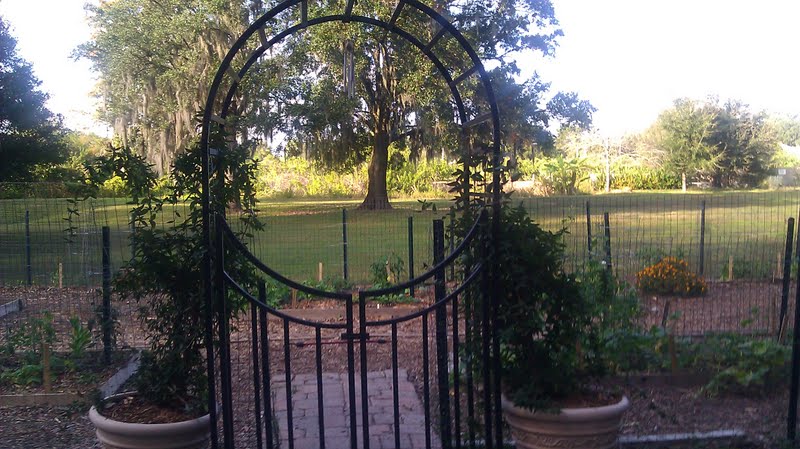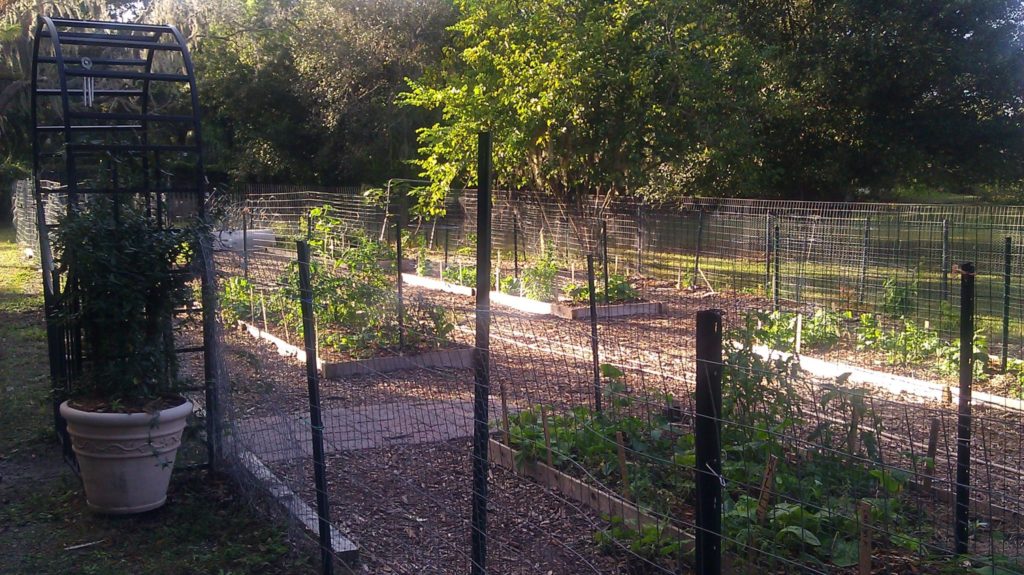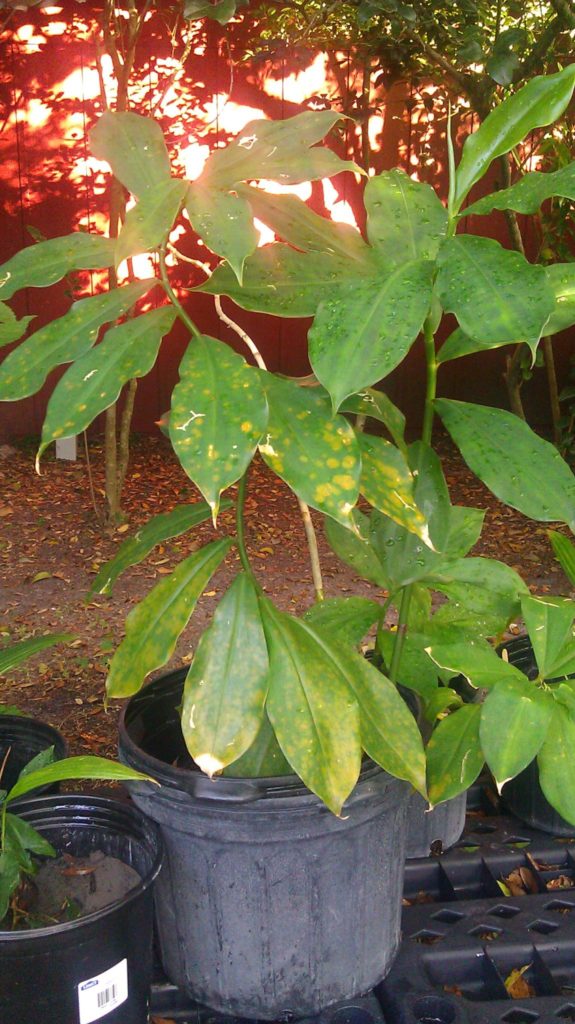 Hands down, my favorite thing about my children’s school besides a quality learning environment is their organic horticulture class.
Hands down, my favorite thing about my children’s school besides a quality learning environment is their organic horticulture class.
Not only do they learn about all aspects of organic gardening from prepping the soil to planting and composting, but they also help care for foraging goats and free ranging chickens.
The classes take turns collecting the eggs and the children even get to take them home to eat, which is no doubt quite the positive learning experience for any families that might regularly purchase conventional store eggs.
One week, my oldest child learned to fish with a net in the freshwater lake that borders the school campus. He was taught to cast the net properly as well as detangle the fish he managed to catch. He was so excited to tell me all about it in the car ride home that day and it was very cheering to hear his stories.

When it comes to planting, the children get to choose which seeds they wish to plant and care for. Two of my children brought home beautiful bunches of lettuce when Fall harvest time rolled around. We had fun determining which dishes would work best with the greens they proudly brought home.
 To the right is the giant ginger plant grown and tended by my oldest. I can’t wait until he brings it home and we can make some amazing homemade ginger ale with the roots!
To the right is the giant ginger plant grown and tended by my oldest. I can’t wait until he brings it home and we can make some amazing homemade ginger ale with the roots!
My question is, why can’t all schools have a program like this? It seems to me that teaching children to care for the land and learn how to produce their own food is as necessary and important a life skill as learning to read and write.
Just me.
While I’m sure my kids do not fully appreciate what they are learning in organic horticulture right now, I also feel quite sure that in the future, the memories of what they have learned will serve them well be it in the form of an easily pulled together backyard garden or possessing the know how to raise a few chickens to supply the family with quality eggs.
It gives me great peace of mind knowing that my kids already know so much more than I did at their age about producing their own food.
With the quality of processed foods continuing to decline and becoming ever more dangerous with each passing year with the unrelenting proliferation of GM foods and chemical additives of all kinds in our food, these types of community based skills will become increasingly more important in coming decades for simple maintenance of personal health, something today’s generations seem to take for granted.
Sarah, The Healthy Home Economist








Wow amazing! What kind of school is this? I dont have children yet but most definitely will be sending them to an alternative school or home schooling.
Yes, what part of the country do you live in and what is the school? My kids go to a public school where they learn none of this but I’m glad I can teach it to my kids at home in my back yard.
Wow! What kind of school?
There’s a lot of pseudo-scientific voodoo about genetically modified food. I’m not convinced it’s correct. Most schools are little prisons. You’re either lucky or wealthy.
What a fantastic experience for your children! My high school (in Vermont) had a large greenhouse and had horticulture courses, but I do not get the feeling that your children are in high school yet. What a fabulous experience for younger children, and such a great way to have growing food and taking pride in food-quality become second-nature. For me, the thought of having a small organic vegetable garden is overwhelming, despite the fact that my parents and my grandparents grew their own vegetables when weather permitted. I want an organic garden, but I was always too busy with traditional school work to pay much attention to what my parents or grandparents were doing out in the yard while I was typing away. I wish I had paid more attention!
Not only do these lessons teach your children about their food shed and stewardship for the land, but they can also be used to teach “academic” subjects. I think all schools should include gardening and treat it as an integral part of the curriculum not as an “extra”. The gardening lessons provide a wonderful opportunity to reinforce lessons in math, history, language arts, etc.
Here in Australia veggie gardens in schools have become very popular the past few years. A well known chef here set up a kitchen garden foundation for schools. The foundation’s scheme is quite expensive to implement, but there are a certain number of government grants available each year. The great thing is, since this foundation was set up, many schools, both public & private have taken the initiative to set up veggie gardens on their own. Hopefully this “trend” will continue.
.. That’s why we teach gardening things at home. We love to grow things. I love all of the posts here. Yay to the homeschoolers! I am a big supporter.
@John: Thanks for the detailed instructions! Just to confirm … plant directly in the 6 inches of potting soil? This is a planting container, not just a composting container?
Buy a 50 ft. roll of turkey wire 4 ft. high with 2″ x 4″ spacing. Cut it in three 15 ft. lengths with 2″ extra wire sticking out at one end to hook onto the other end. Bring the ends together to form a large cage about 4 ft. in diameter. Use the 2″ piece to hook the ends together from top to bottom. Now weave vertical blind slats in the fence wire horizontally all the way around from top to bottom to make a large basket. This 50 ft. roll will make you three baskets. Be sure you locate each basket on level ground. Fill each basket with leaves,any kind except pine needles, and keep adding leaves for at least 2 weeks as they settle. This is very, very important because the leaves will pack down like a sponge. At the end of 2 weeks put at least 6 inches of planting soil on top covering the entire surface over the leaves. You must plant now because the weight of the soil will press the leaves down further and it will be hard to plant reaching over the fence wire after it settles. It will continue to settle for about 2 to 6 weeks depending on the type of leaves and the amount of rain. It should stop settling at about a 3 ft. height or waist height, ideal for those using wheelchairs. After the soil has settled to this point cut the top 10 inches of the fence wire off leaving 2 inch pieces sticking up all the way around, about 90 pieces. Bend these down inside to avoid being cut by the sharp ends. Save the part you cut off for use later. In 2 to 3 years it will have settled to about 2 ft. or less. This is slow composting also known as anaerobic digestion. In the end you end up with good humus. When you are ready to start over just lift the wire cage off leaving a large cake of humus, set the cage in a new location, put the 10 inch piece back on top, fill it with leaves, keep adding leaves for 2 weeks, add 6 inches of soil and you’ve started all over again. Plant
What a great post, and I’ve appreciated all of the comments 🙂
John, what a great idea, I have some cage making wire the openings are 1 by 2 inch. I think I can use that without slats. I will try anyway.